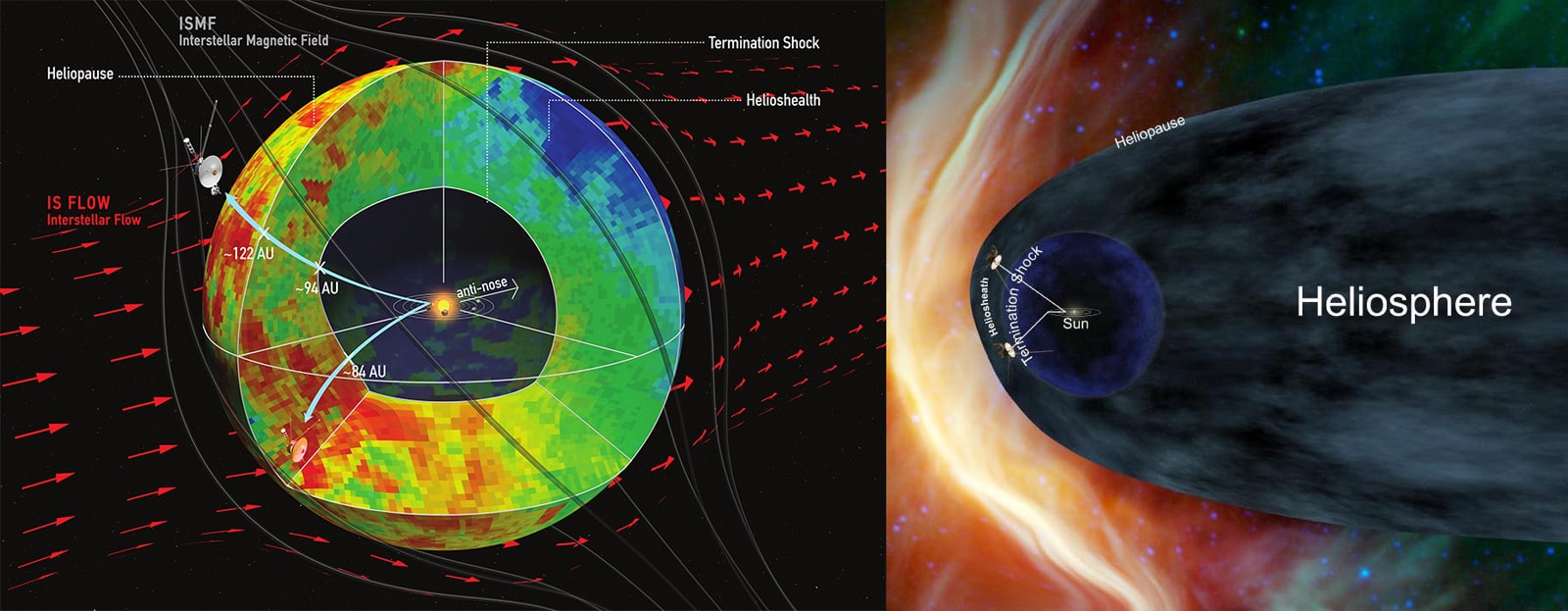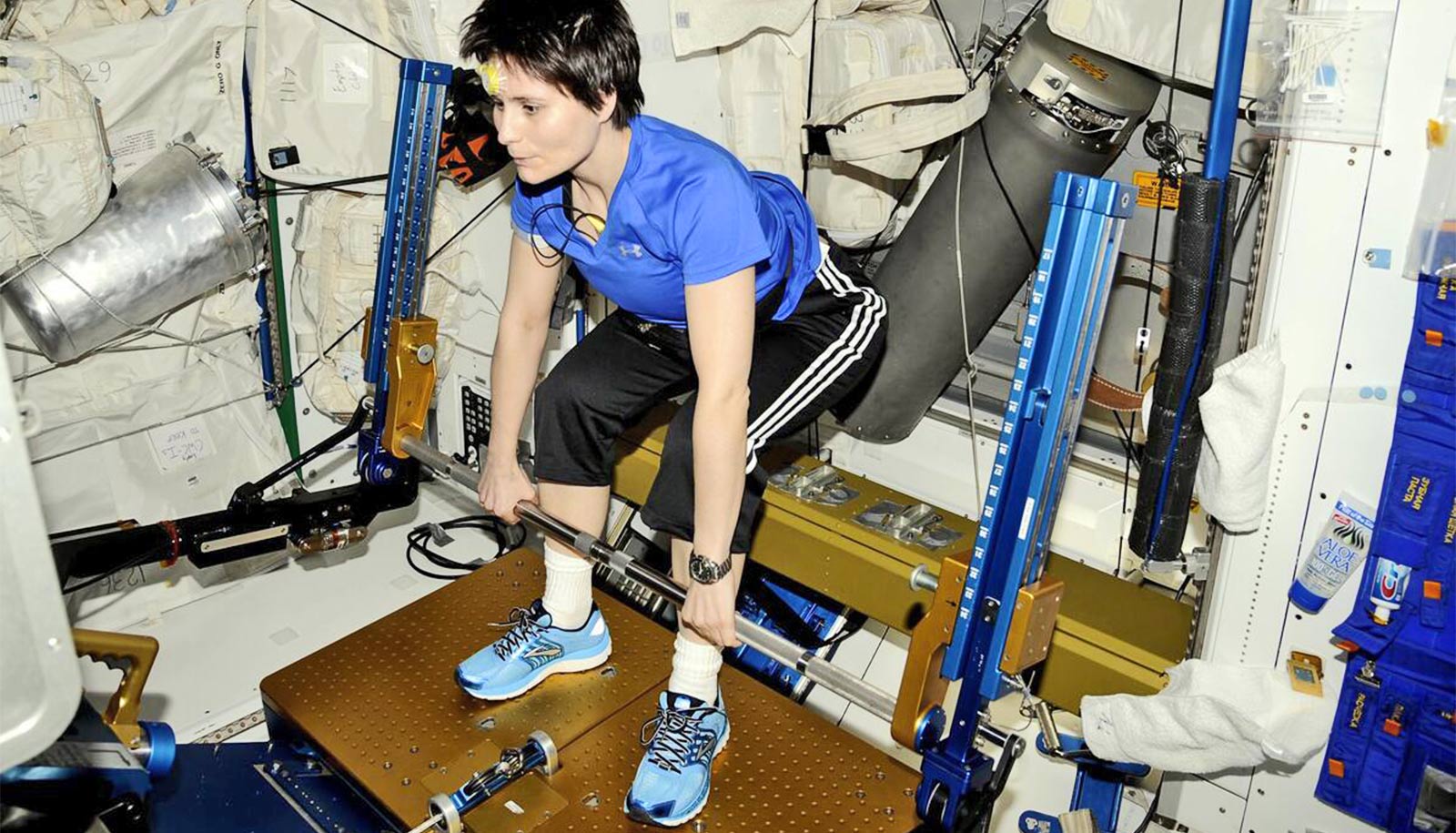The huge bubble formed by the sun’s magnetic influence may be shaped much more like a basketball than a comet, new measurements show.
The solar wind—magnetic solar material that constantly flows out from the sun—fills the inner solar system, reaching far past the orbit of Neptune. The wind creates a bubble, some 23 billion miles across, called the heliosphere.
The entire solar system, including the heliosphere, moves through interstellar space. Until now, scientists have thought the heliosphere was comet-shaped structure, with a rounded head in the direction of travel and an extended tail trailing behind.
“We never thought that we would see what we’re seeing and be able to image the boundaries of the heliosphere.”
But new data covering an 11-year solar activity cycle suggests instead that it may be much more compact and rounded on both ends.
“Instead of a prolonged, comet-like tail, this rough bubble-shape of the heliosphere is due to the strong interstellar magnetic field—much stronger than what was anticipated in the past—combined with the fact that the ratio between particle pressure and magnetic pressure inside the heliosheath is high, says Kostas Dialynas of the Academy of Athens in Greece, lead author of the study that is published in the journal Nature Astronomy.

The Magnetospheric Imaging Instrument on Cassini, which has been exploring the Saturn system over a decade, gave scientists crucial new clues about the shape of the heliosphere’s trailing end, the heliotail.
When charged particles from the inner solar system reach its boundary, they sometimes interact with neutral gas atoms that come from outside the solar system, between the stars. Some of these charged particles can drop electrons and ping back toward the inner solar system as fast-moving neutral atoms. Cassini, near Saturn, can measure them as they return inbound.
The opportunity to measure solar wind particles bouncing back from the heliosphere’s edge was an unexpected bonus of the Cassini mission.
What a pal! Pluto’s moon blocks solar wind
“Our Cassini instrument was designed to image the ions that are trapped in the magnetosphere of Saturn,” says coauthor Tom Krimigis, of the Johns Hopkins Applied Physics Laboratory, an instrument lead on the Cassini and Voyager missions. “We never thought that we would see what we’re seeing and be able to image the boundaries of the heliosphere.”
Because solar wind particles move at a small fraction of the speed of light, their journey from the sun to the edge of the heliosphere and back takes years. So when the number of outbound particles from the sun changes—usually as a result of its 11-year activity cycle—years pass before that change is reflected in the number of neutral atoms shooting back into the solar system.
Cassini’s new measurements revealed something unexpected: The particles coming back from the tail reflect the changes in the solar cycle almost exactly as soon as those coming back from the nose.
“If the heliosphere’s ‘tail’ is stretched out like a comet, we’d expect that the patterns of the solar cycle would show up much later in the measured neutral atoms,” Krimigis says.
The fact that patterns from solar activity show just as quickly in tail particles as those from the nose implies that the tail is about the same distance away. This means that comet-like tail that scientists envisioned may not exist at all; instead, the heliosphere may be nearly round and symmetrical.
Laser ‘supernova’ mimics magnetic fields in space
A rounded heliosphere could result from a combination of factors. Data from Voyager 1 show that the interstellar magnetic field beyond the heliosphere is stronger than scientists previously thought, meaning it could interact with the solar wind at the edges of the heliosphere and compact the heliosphere’s tail.
The structure of the heliosphere plays a big role in how particles from interstellar space—called cosmic rays—reach the inner solar system, where Earth and the other planets are.
“This data that Voyager 1 and 2, Cassini and IBEX provide to the scientific community is a windfall for studying the far reaches of the solar wind,” says Arik Posner, NASA’s Voyager and IBEX program scientist. “As we continue to gather data from the edges of the heliosphere, this data will help us better understand the interstellar boundary that the heliosphere, this data will help us better understand the interstellar boundary that helps shield the Earth environment from harmful cosmic rays.”
Source: Johns Hopkins University



